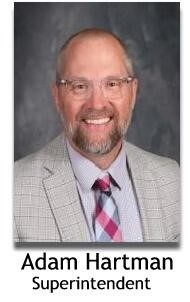You are here
Districts communicate about their ESSER funds with help from two nonprofits
Districts communicate about their ESSER funds with help from two nonprofits

Adam Hartman, superintendent of Cañon City School District
Adam Hartman, superintendent of the Cañon City School District, wanted to provide financial transparency so everyone in his small community could find out how the district was spending the $331,335 it received in federal pandemic Elementary and Secondary School Emergency Relief funding.
Hartman turned to two nonprofits – the Colorado School Finance Project and the Colorado Education Initiative – which received a combined total of $575,000 from ESSER III to finance the Learning and Transparency Technical Assistance Program to help districts like Cañon City to communicate how they were spending their ESSER funding.
“We want to get all the stories out there right to help the community understand where dollars went, how they were used, how they benefited students,” Susan Meek, CSFP program manager explained. As part of that effort, a webpage was created that captures where the dollars in every district went.
CSFP provides communication plans and toolkits to help smaller and mid-level districts without communications teams get the word out. The toolkit includes press release templates, newsletter and blog post templates, talking points and hints on social media. CSFP field managers coordinated and ran information sessions for districts on proper communication methods.
“They emphasized telling your own story,” Hartman said.
The Cañon City district, with approximately 3,500 students, was cited by CEI in its June 2023 progress report for its standout transparency performance.
Hartman flooded social media with videos and other social media posts and archived the detailed, positive messages to his superintendent's and district’s Facebook pages. Hartman also wrote a monthly article for a newspaper delivered to every mailbox with information on where the district’s ESSER dollars were spent. Additionally, he reserved time at every school board meeting to provide an ESSER spending report.
So where did Cañon City’s $331,335 in ESSER funding go?
“There were three phases,” Hartman explained. “The initial response, shoring up needs, then reaching out to individual schools to support their needs.”
To address the pandemic’s learning loss, summer school was expanded. K-5 parents who weren’t comfortable returning their children to the classroom received online learning programs. Additionally, air quality in buildings was improved. Water-bottle filling stations were added to drinking fountains to improve hygiene.
After students returned to school, everyone was wearing masks. Teachers were difficult to hear or understand. Cañon City turned to voice-lift amplification, a technology that distributes the speaker’s voice throughout the room loud enough for everyone to hear.
“Every classroom had teachers with mics around their necks,” Hartman said. “The amplification made things clear. Teachers manage their classrooms better with amplification.”
Teachers continued to wear the mics when the masks came off.
ESSER money also went to upgrading the skilled trades department equipment, including a new air compression system, lab equipment and a food truck with catering equipment.
Hartman says he believes his efforts to be transparent had a lasting effect. In November 2023, the district asked voters to approve a $13 million school construction bond necessary for the district to get an additional $23 million BEST grant to pay for new construction and upgrades. Would voters wonder why the district needed the additional money when it had already received hundreds of thousands in ESSER funds?
As it turned out, that wasn’t an issue. The bond passed 61.38% to 38.62%. “I hope that our transparency contributed to that vote,” Hartman said.


Connect With Us





